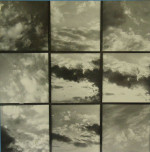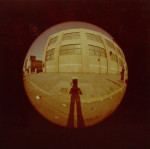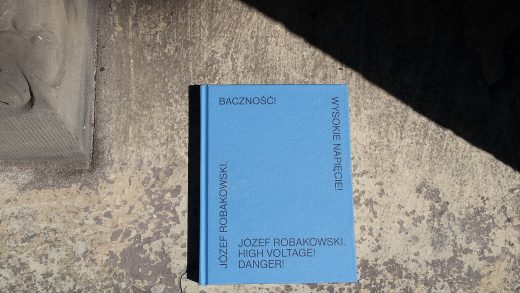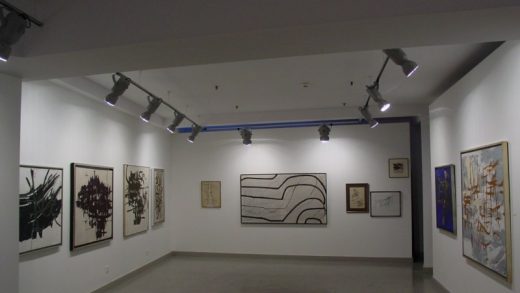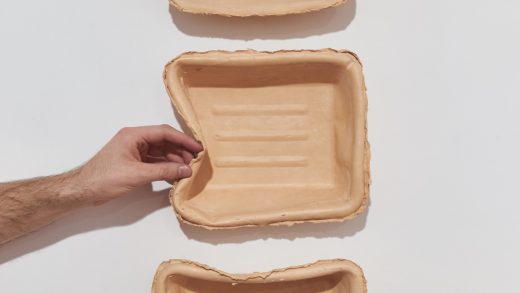Państwowa Galeria Sztuki w Sopocie
State Art Gallery in Sopot
![]()
opening: 15.09.2016
exhibition until 23.10.2016
curator: Cezary Pieczyński
partner: Galeria Piekary
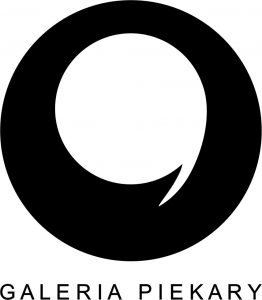
Andrzej Lachowicz, born 1939 in Vilnius, died 2015 in Wrocław, was one of the foremost Polish neo-avant-garde artists. His oeuvre encompasses photography, painting, graphic art, drawing as well as a number of theoretical texts, which offer significant insight into art and conceptual tendencies of his times.
In 1957-1960, Lachowicz studied at the Academy of Mining and Metallurgy in Kraków, and since 1960 at the Higher State School of Plastic Arts in Wrocław (currently Academy of Fine Arts) from which he graduated in 1965 under supervision of Professor Stanisław Dawski. As early as 1968, Lachowicz joined the Association of Polish Art Photographers, where he later frequently sat as a member on the Artistic Council. Towards the end of the 1960s, the artist began work on his first notable photographic series, i.e. Transplantacje [Transplantations]. Subsequently, he embarked on the series entitled Topologie [Topologies], which he continued until 1990. In the latter, multiple exposures of entwined hands yielded abstract compositions which brought to mind the 1930s work of Edward Weston, which was equally erotic and disturbing in its ambiguities as the artist innovatively used peppers of shells to create imagination-provoking forms, which tempted the viewer into a play of connotations. The work also manifests the artist’s guiding principle of “permanent photography (and art)”, whereby the re-cognition capacity of the eye is transcended, as steady perception is disrupted by motif which the sight cannot easily identify and interpret. The investigations into visuality and indexicality of image, which frequently recurred in Lachowicz’s work, reflected continual attempts to devise an new visual language.
In 1970 in Wrocław, together with Natalia LL, Zbigniew Dłubak and art critic Antoni Dzieduszycki, Lachowicz established the art group and Gallery PERMAFO, which functioned until 1981. The artists would promote current Polish art as well as exhibit works of numerous international artists representing conceptual and performative currents, such as Joseph Beuys, Tibor Hajas, Joseph Kosuth, A. R. Peck or Jiři Valoch. Ultimately, it was Conceptualism which proved a prolific area for the Wrocław artists, who found additional inspiration in the work of Stanisław Dróżdż, who explored concrete poetry, a genre which expressed itself through image as an elaborate composition of words or letters, often involving typographic experimentation. This is reflected in a number of works by Andrzej Lachowicz, e.g. large-format acryl paintings which played with convolutions of the artist’s name (written backwards). In the 1970s, Lachowicz also created Znaki izomorficzne [Isomorphic Signs], in which the principal motif he employed was his own shadow. The motif had already appeared in his work in the 1960s and would be utilised in the later years as well (for instance in the 2005 series entitled Wyjątkowy punkt widzenia [A Unique Point of View], which delved into that theme again). The concept of shadow is associated with the record of time, since it lasts in a specific duration of time which can be determined by changes in the shadow-drawn outline of the artist’s body and through variations of space, which changed with each new series, thus giving a more precise indication of time. The shadow itself – as Andrzej Kostołowski observes – harbours ambivalent, though always metaphysical connotations: between the shadow as an affirmation of the existence of soul and a visualization of its darkest recesses – the shadow ultimately becomes a kind of mental portrait. And although Andrzej Lachowicz perceived the shadow as an intimation of “dark, sinister sides of the human being”, in both cases the shadow is a materialization of the spectral, the incorporeal and thus invisible to the eye, while photography turns out to be a suitable tool to reveal the unmanifested. In 1977, the artist was awarded a scholarship from the Kościuszko Foundation in New York, and in 1978-1995 acted a the curator and superintendent of the International Triennial of Drawing in Wrocław, an event whose idea originated with Lachowicz himself.
The concept of shadows falling on various surfaces is in a way continued in the 1980s, in Lachowicz’s study of the notion of fall, conveyed in the series known as Energia upadku [Energy of Decline]. In the subsequent series, entitled Energia luzu [Energy of Ease] the artist used his black-and-white photographic portraits, which he subjected to painterly intervention, introducing colour and dynamism. Much at the same time, Lachowicz created his foremost theoretical writings: Poziomy energetyczne sztuki [Energy Levels of Art] of 1978 and Zwątpienie i nadzieja [Despair and Hope] of 1986, both of which had a considerable impact on the then Polish theory and practice of art. In the 1990s, Lachowicz received two more fellowships: from Verein Kulturkontakte in Vienna (1991) and PRO-HELVETIA in Switzerland (1994). In 2009 the artist received the Gloria Artis Silver Medal of Cultural Merit and the Katarzyna Kobro Award.


